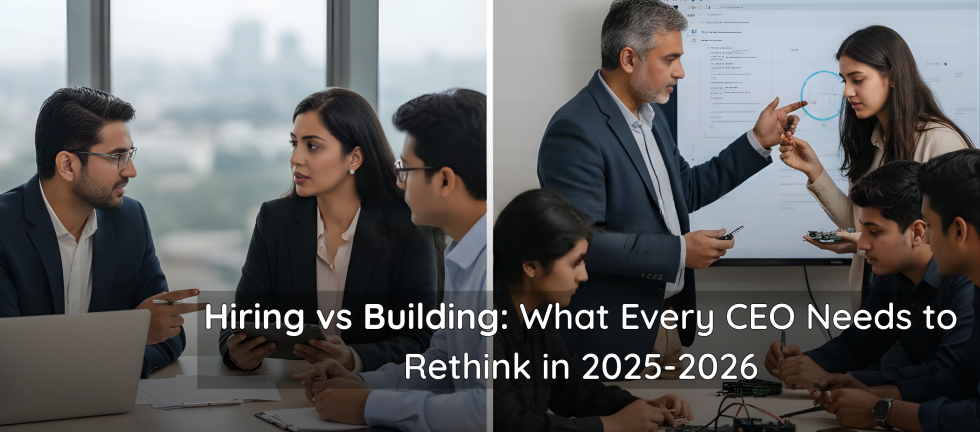The Talent Dilemma Facing India’s CEOs
What Every CEO Needs to Rethink:
As industries adapt to AI, automation, and hybrid work models, CEOs are facing a strategic question: Should we continue hiring for every skill gap—or start building talent internally through structured programs like apprenticeships and WILP?
This decision has deep implications—not just for HR budgets, but for productivity, innovation, and long-term business resilience.
What the Numbers Reveal About Hiring vs. Building
A recent India Today report highlights that 75% of recruiters in India now favour skills over degrees– indicating a major mindset shift.
Yet, a Deloitte Global study shows 59% of organizations still prioritize credentials and experience over potential and learning ability.
According to recent labour market data, companies investing in structured skilling programs—especially apprenticeships—report up to 50% lower hiring costs, 10–25% lower attrition, and 20–25% gains in productivity.
The World Economic Forum estimates that by 2025, 97 million new roles will emerge globally, but filling them will require businesses to rethink how they build capabilities internally.
Clearly, buying talent is no longer scalable—or sustainable.
Why “Building” Must Become Business Strategy
1.Cost Efficiency: Homegrown talent reduces recruitment and onboarding costs significantly.
2.Cultural Fit: Internally trained employees understand your values, systems, and customer needs better.
3.Agility: Build-first organizations adapt faster to change—because capability is cultivated in-house.
4.Continuity: Reduces dependency on volatile job markets and shifting candidate expectations.
Roadmap for CEOs: From Hiring-heavy to Build-first
Audit critical roles and skill gaps:
Identify which capabilities are mission-critical, and which can be built over time through learning paths.
Adopt structured talent programs:
Leverage apprenticeships, WILP, and internal learning academies to build consistent, scalable pipelines.
Embed learning into real work:
Move beyond standalone training—integrate skilling with live projects, mentorship, and stretch assignments.
Track impact metrics:
Shift focus from training hours to business outcomes: retention, promotions, innovation participation, cost-per-hire saved.
Celebrate internal growth stories:
Recognize and promote those who rise through learning—this builds aspiration and loyalty.
A Note from Experience:
In organizations that invested in internal capability-building, I’ve seen apprentices evolve into team leads, freshers become product champions, and internal learners outperform lateral hires.
These are not isolated stories—they’re proof that building is not just possible—it’s powerful.
Conclusion:
In 2025 and beyond, CEOs must lead the shift from talent acquisition to talent cultivation.
The future belongs to organizations that build—not just buy—capabilities.
As Building India’s Talent Engine, I urge leaders to invest in structured, scalable, and future-ready approaches to developing talent internally.
Because your best performer of tomorrow might already be on your team today. (What Every CEO Needs to Rethink in 2025-2026)

